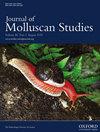Limited occurrence of the profunda morph of the quagga mussels (Dreissena rostriformis bugensis) in the Volga River reservoirs of Russia and limited genetic differences between morphs in Russia and North America
IF 1.2
4区 生物学
Q2 MARINE & FRESHWATER BIOLOGY
引用次数: 2
Abstract
The quagga mussel Dreissena rostriformis bugensis is a highly invasive species. It plays an important role in benthic communities, influencing their structure and functioning. Two morphs of this mussel have been described: a shallow-water (i.e. the typical) morph and a deep-water morph, profunda. Currently, profunda has been found in several water bodies only within the nonnative range of D. r. bugensis. In North America, the profunda morph is widespread and abundant in the Laurentian Great Lakes. In Europe, profunda was found for the first time in 2009 in the Cheboksary Reservoir, which is located on the central part of the Volga River. A 2016 search for profunda in the four deepest Volga reservoirs (Cheboksary, Kuybyshev, Saratov and Volgograd) failed to find this morph even at the site where it was found in 2009. Traditional and outline-based morphometric analyses showed that only the shallow-water morph individuals inhabited studied sites at depths of 25–33 m. The present study revealed that morphological differences between the typical and profunda morphs from both the European and North American ranges were accompanied by limited genetic differences. Microsatellite analysis showed only minor differences in allele frequencies between morphs sampled in 2019 from the Cheboksary Reservoir; these differences were not significant after correction for null alleles. High phenotypic and ecological plasticity of D. r. bugensis may facilitate its invasion success.俄罗斯伏尔加河水库中quagga贻贝(Dreissena rostriformis bugensis)深部形态的有限出现,以及俄罗斯和北美形态之间的有限遗传差异
quagga贻贝Dreissena rostriformis bugensis是一种高度入侵物种。它在底栖生物群落中发挥着重要作用,影响着它们的结构和功能。这种贻贝有两种形态:浅水形态(即典型的)和深水形态(深部)。目前,仅在布氏D.r.bugensis的非本土范围内的几个水体中发现了深达。在北美洲,深部变形在劳伦斯五大湖广泛而丰富。在欧洲,2009年在位于伏尔加河中部的切博克萨里水库首次发现了provenda。2016年,在伏尔加四个最深的水库(切博克萨里、库比舍夫、萨拉托夫和伏尔加格勒)寻找深部,即使在2009年发现的地方也未能发现这种变体。传统的和基于轮廓的形态计量分析表明,只有浅水形态个体居住在研究地点的深度为25-33米。本研究表明,欧洲和北美地区典型形态和深水形态之间的形态差异伴随着有限的遗传差异。微卫星分析显示,2019年从Cheboksary水库采样的形态之间的等位基因频率只有微小差异;校正无效等位基因后,这些差异并不显著。布氏D.r.bugensis表型和生态可塑性较高,可能有利于其入侵成功。
本文章由计算机程序翻译,如有差异,请以英文原文为准。
求助全文
约1分钟内获得全文
求助全文
来源期刊

Journal of Molluscan Studies
生物-动物学
CiteScore
3.00
自引率
8.30%
发文量
36
审稿时长
3 months
期刊介绍:
The Journal of Molluscan Studies accepts papers on all aspects of the study of molluscs. These include systematics, molecular genetics, palaeontology, ecology, evolution, and physiology. Where the topic is in a specialized field (e.g. parasitology, neurobiology, biochemistry, molecular biology), submissions will still be accepted as long as the mollusc is the principal focus of the study, and not incidental or simply a convenient experimental animal. Papers with a focus on fisheries biology, aquaculture, and control of molluscan pests will be accepted only if they include significant advances in molluscan biology. While systematic papers are encouraged, descriptions of single new taxa will only be considered if they include some ‘added value’, for example in the form of new information on anatomy or distribution, or if they are presented in the context of a systematic revision or phylogenetic analysis of the group.
 求助内容:
求助内容: 应助结果提醒方式:
应助结果提醒方式:


